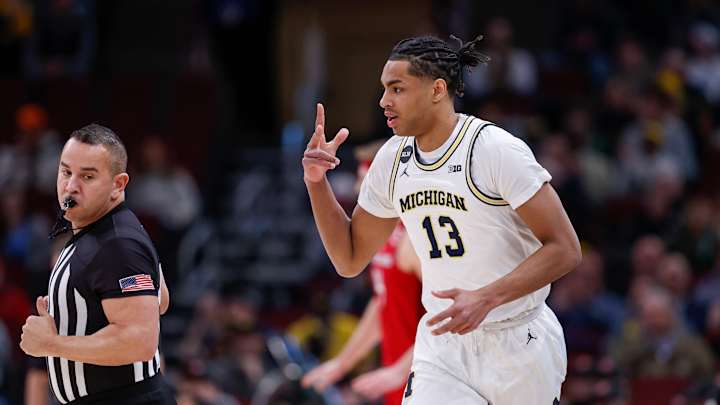The Art of Scalability: NBA Rookies Should Embrace New Roles

In this story:
As we're nearing the 2023-2024 NBA season, the newest crop of players, harvested this June, will have to find their way on their new teams, and in the most competitive league they've ever played.
Some players — presumably the ones who were picked highly — will have more offensive freedom than the vast majority of their fellow draft alums, which brings me to this: Understanding the concept of scalability is a tremendous asset for any rookie to have as they embark on their first professional season.
NBA players, even fringe ones, were for the most part superstars in high school and key players in college. They are used to being heavily involved and used to having responsibility areas that far exceed what NBA teams need for them to have now.
And therein lies the challenge.
Newly arrived rookies will do themselves a great service by letting go of past roles, and fully embrace the fact that NBA teams will initially only ask them to fill lesser roles, meaning fewer shots, and less freedom.
Let's take Keegan Murray as an example.
Murray is one of the best offensive players from the 2022 draft class. He has on-ball creation ability, a deadly in-between game, and can even produce points in the low post.
The Sacramento Kings could easily have set him loose in his debut season, but that wasn't what they needed from him at that time.
Murray became, primarily, a long-range shooter who had the job of spacing the floor for De'Aaron Fox and Domantas Sabonis. The Kings were well aware of Murray's skills, just as they were aware that they decided to forego the full Murray experience last season.
That doesn't mean they'll forego it again. In fact, I'd argue that Murray embraced scalability to such an extent, it endeared him greatly to the coaching staff. This should bode well for his future.
For rookies chosen in June, outside of the Wembanyamas and Hendersons, a similar approach would be highly recommended.
The good news is that quite a few players selected in the 2023 draft are positioned exceptionally well to adopt such an approach.
Jett Howard spent a lot of time spacing the floor for Michigan, just as Jordan Hawkins did for Connecticut. Both should see their roles as primarily being shooters, similar to how the Kings used Murray.
Both Howard and Hawkins have some creation in their respective bags, but it's unlikely now is the time to experiment with it. If the Magic and Pelicans find themselves thoroughly outside the playoff picture in, say, March, that might change. But until then, expect simple - yet effective - roles for both.
(Why no Gradey Dick, you might wonder? The Raptors are in a weird spot. They just lost a ton of talent in free agency, and they have some major contractual decisions coming up. They could decide to scale Dick's role up, just to create some momentum for the rookie moving forward, should they end up making mid-season trades.)
Scalability isn't just a player deciding to do more, although it can be that too. But it can be team-driven, and it's under such circumstances young players in particular benefit from embracing new roles.
Unless noted otherwise, all stats via NBA.com, PBPStats, Cleaning the Glass or Basketball-Reference. All salary information via Spotrac. All odds courtesy of FanDuel Sportsbook.
Want to join the discussion? Like Draft Digest on Facebook and follow us on Twitter to stay up to date on all the latest NBA Draft news. You can also meet the team behind the coverage.

Morten has managed to create a stable career for himself, launching Denmark's first weekly NBA radio show, and co-hosting a weekly NBA TV show. He's a seasoned basketball analyst and is experienced covering the league and its upcoming prospects.
Follow msjnba